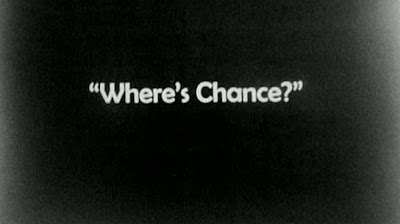








Guy's 'Sis' is played by Maya Lawson by the way.



The father (all of this is symbolic/metaphor) uses the family signet ring (multigenerational abuse families [this is supposed to be semi-autobiographical] leaving their "brand upon the brain".) to extract 'Nectarite' from his daughter and the orphans' skulls, leaving suspicious imprints on the back of their heads (so obvious metaphor, penetrating their brain [general MK/messing with their heads symbolism]).
































Together with his teenage sister and a horde of orphans, young Guy Maddin [coming back to the island triggers these long-ago dissociated memories; imaginitive games (pretending to be the 'Lightbulb Kids') that children would play, the characters they constantly read/obsessed over (shows how the programming of alters can be manipulated through controlling their environment, what they read/watch) would became both siblings' alter-personalities ([alters can be either sex ((hence all the androgyny here)), they're sometimes not even human ((not hard to do, simple dehumanization methods))] their minds escaping together in this 'detective' alter-reality ((survival mechanism, allows them to forget all the bad things they themselves have experienced as they are a different person, and find out what actually happened)); the scenes of Chance kissing the sister and such are actually acts of incest between the brother and sister, the mask, top-hat, "The Undressing Gloves" are all part of this too)] lazes away his under-stimulated youth on the mysterious island he will someday inherit. In the lighthouse orphanage in which they all live, their every move is watched over by their overbearing and tyrannical mother while their father, a scientist and inventor, works away secretively in the basement.
When new adoptive parents discover mysterious head wounds on their children, teen detectives Wendy and Chance Hale - brother and sister sleuths known as the "Lightbulb Kids" - visit the island to launch an investigation [this description takes a lot of things far too literally; these are fictional characters ((like the Hardy Boys)) that they read as children so to find out what really happened ((and other, more primal and psychosexual reasons)) they would dissociate into/become the characters/personalities they know so well (through reading)]. Guy is weak-kneed as he falls for Wendy, while Sis is flushed with love for Chance, a love which must be kept from Mother at all costs. As the investigation progresses, the kids are led into the darkest regions of revelation and repression as the terrible secrets of Guy's family are revealed.




4 comments:
one thing that I have noticed about cinema is how very few films are actually not time-spliced. Rarely is there ever a movie that is one continual progression of time, unbroken from one event to the next. The timeline is always broken. For a hypothetical example, scene one ends with the main character boarding a plane at night time in down town Mew York, bound for Los Angeles, and scene two is the same character two days later, early morning, in a completely different setting, on the California coast, with seagulls calling, etc. Where was the character in the time that was cut out? What happened on the plane? How did they get from Los Angeles airport to the California coast? Where did they sleep the night before? etc, is not answered.
See how the disjointed existence of movie characters fits the 'missing time' pattern that mk victims experience? My guess is that mk victims who regularly experience blackouts of missing time, sometimes for days while in another alter, would see this kind of motion picture time splicing as perfectly natural. So most films would tend to reinforce their feeling that they themselves are normal, and that it is natural to experience life in this way, with hours and days missing, because almost every film does this.
incredible find. this film has it all. Orphanages, satanic ritual abuse, cannibalism, twinning. This could easily be in reference to what went on , and is still going on, at places like
Haut de la Garenne - The Jersey children's home in the Channel Islands between England and France.
The Pygmies of New Guinea have legends of foreign giants who would invade them and cannibalize them. I suspect that these 'giants' were so big because they were into drinking the blood of children and getting all that flesh and HGH (human growth hormone) into their diets.
Mafia hitman Richard Kuklinski never stopped growing even into late middle-age. He had an industrial sized freezer that he stored bodies in.
Watched the film. Didn't really enjoy it, but "got" it. Reminded me a lot of "outsider artist" Henry Darger, and his magnum opus on The Vivian Girls. Darger's own childhood also resonates with "Brand Upon the Brain." Resonates quite strongly, matter of fact. Wikipedia has a decent enought article on Darger, but Google him as well, for samples of his visual style.
Hmmm...perhaps The Vivian Girls would be a good topic for your insightful treatment...
here guys, i offer u the soundtrack
http://021r0mthrust.blogspot.com/2010/05/brand-upon-brain-soundtrackat-last.html
Post a Comment